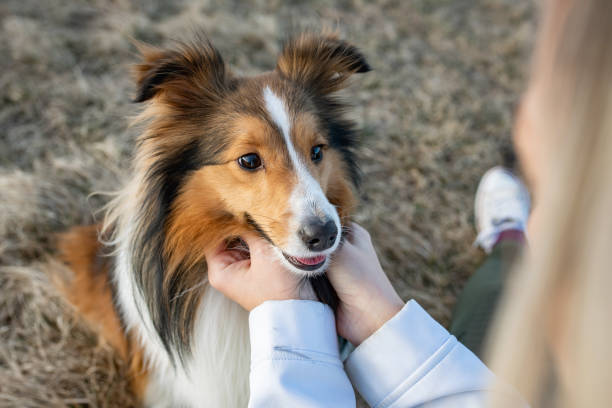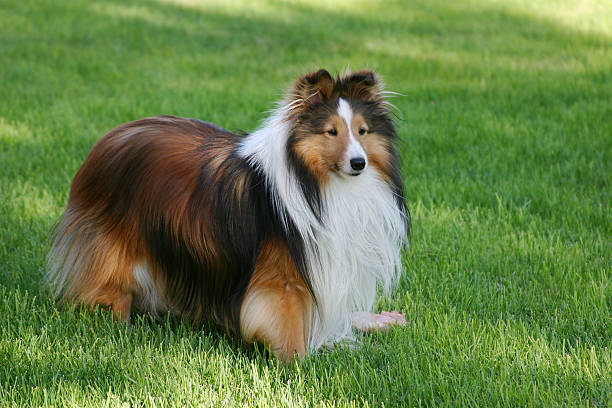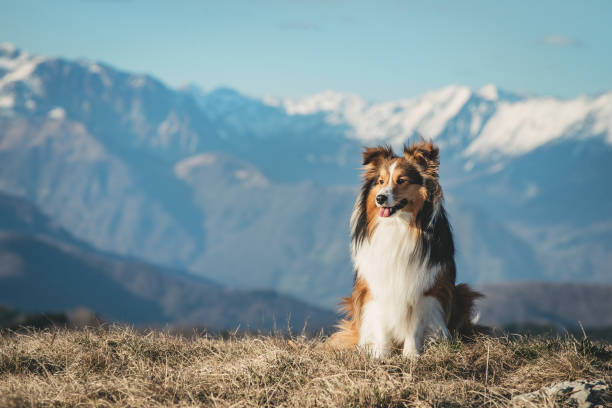Shetland Sheepdog

Breed History:
The Shetland Sheepdog, often affectionately called the "Sheltie," hails from the Shetland Islands of Scotland, where it was developed in the early 19th century. Originally bred to herd sheep, ponies, and poultry, the Sheltie evolved from small working collies and likely shares ancestry with the Rough Collie, though it is a distinct breed.
Due to the harsh island climate and limited resources, Shelties were bred to be small, intelligent, and resourceful to thrive in rugged terrain. Their sharp instincts and loyalty made them indispensable to farmers. The breed gained popularity in the UK and later in North America in the 20th century as a family companion and obedience dog. Today, the Sheltie is admired for its elegance, intelligence, and devoted nature.
|
Gender |
Height |
Weight |
|
Male |
33-41 cm |
7-11 kg |
|
Female |
33-41 cm |
7-11 kg |
Size – Small-Medium
Life Expectancy: 12–14 years

Breed Appearance:
The Shetland Sheepdog is a small, agile, and graceful dog with a striking resemblance to a miniature Rough Collie. It has a luxurious double coat, with a dense, woolly undercoat and a long, straight, harsh outer coat that forms a thick mane and frill around the neck and feathering on the legs and tail.
Its head is wedge-shaped, with a well-defined stop, expressive almond-shaped eyes, and small, semi-erect ears that tip forward. The Sheltie’s coat colours include sable, black, and blue merle, often with white and tan markings. Its overall appearance conveys alertness, refinement, and symmetry.
Breed Type – Herding / Family Companion:
Originally a working herding dog, the Sheltie retains a strong instinct to herd and guard. However, it has become equally cherished as a devoted family companion. It is known for its deep loyalty, intelligence, and gentle nature.
The Sheltie is affectionate with its family but tends to be reserved or wary with strangers, making it a natural watchdog. It is especially good with children and other pets when properly socialised. Its keen awareness and vocal tendencies mean it is quick to alert its owners to anything unusual.

Training:
The Shetland Sheepdog is one of the most intelligent and trainable breeds, ranking high in obedience and agility. It thrives on structure, praise, and positive reinforcement. Quick to learn and eager to please, the Sheltie excels in obedience, agility, herding trials, and even canine dance.
Its intelligence and sensitivity make it responsive, but also emotionally tuned-in—harsh corrections can lead to nervousness. Early socialisation helps prevent excessive shyness and curbs the instinct to herd people or other pets.
Health & Care:
The Sheltie is generally a healthy breed, though it can be prone to certain hereditary conditions. Common health concerns include:
-
Collie Eye Anomaly (CEA)
-
Hip dysplasia
-
Hypothyroidism
-
Dermatomyositis
-
Von Willebrand’s disease
Reputable breeders test for genetic conditions, and regular veterinary check-ups are important. Maintaining a balanced diet, dental hygiene, and moderate weight supports long-term health.

Living Conditions:
Shelties are adaptable to various living environments, including apartments, provided they receive sufficient daily activity. Ideally, they enjoy homes with access to a secure yard and opportunities to run and play.
This breed thrives in homes where it receives daily attention and mental stimulation. The Sheltie is not suited for isolation—it craves companionship and may become anxious if left alone for long periods. It prefers cooler climates, thanks to its thick double coat.
Exercise:
The Sheltie is moderately energetic and enjoys daily walks, games, and training sessions. It needs at least 45–60 minutes of physical and mental exercise per day to stay content. It especially enjoys agility, herding, and obedience work, which tap into its working heritage.
Boredom can lead to barking, chasing, or digging. Puzzle toys, obedience drills, or fun training sessions can help meet its mental needs.
Grooming:
The Shetland Sheepdog's long, double coat requires regular grooming. Brushing 2–3 times a week helps prevent matting and reduces shedding. During seasonal shedding (spring and fall), daily grooming may be necessary.
Bathing should be done monthly or as needed, and special attention should be given to the ruff, ears, feathering, and tail, where mats tend to form. Regular nail trimming, dental care, and ear cleaning are important parts of Sheltie maintenance.

Advantages:
-
Exceptionally intelligent and easy to train
-
Loyal, affectionate, and eager to please
-
Great with children and other pets
-
Adaptable to small homes or apartments
-
Excellent watchdog with alert instincts
-
Excels in dog sports and obedience competitions
Disadvantages:
-
Needs regular grooming due to heavy shedding
-
Can be shy or reserved with strangers if not socialised
-
Prone to barking if bored or anxious
-
Sensitive to harsh training or chaotic environments
-
May try to herd people, children, or other pets
-
Not ideal for households where it's left alone often

